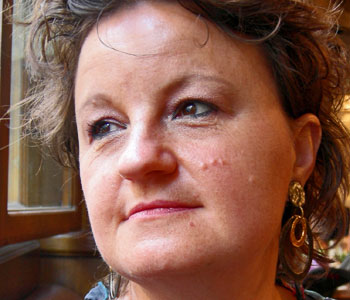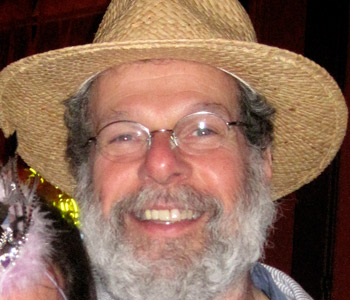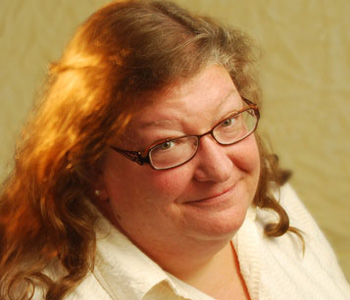Cliff Edwards
Mystery of the Night Café: Hidden Key to the Spirituality of Vincent Van Gogh
SUNY Press
116 pages, 9 x 7 inches
ISBN 978 1438426112
ISBN 978 1438426129
This is my third book on the spiritual journey of the artist Vincent Van Gogh. I began with an overview of his life, Van Gogh and God, then focused on nine critical paintings, The Shoes of Van Gogh. Neither of those works satisfied my hope of getting to the heart of the fascination the artist holds for people all over the world. Then I came upon one painting of his hanging in a gallery at Yale University.
The more I studied that painting, the more it revealed itself as the artist’s own key to his sense of life’s meaning. The book is my attempt to take the reader with me, from clue to clue, as the mystery of the significance of this one painting, “The Night Café,” reveals itself.
I hope readers will treat it as a mystery to be solved, and will evaluate each of the clues I find and present. Here we have one of the few paintings Van Gogh both signed and titled, a painting he described as “one of my only works with deep meaning.” The mystery is how one painting inside a café for poor workers and misfits can serve as a key to the artist’s spiritual journey.
I believe I have solved the painting’s meaning. I believe those who read this book will see the work in an entirely new and convincing way, and that this new way will open for the reader a new approach to the art of life.
The uniqueness of my approach, as compared to the hundreds of books written about Van Gogh, is that I take seriously the artist’s own interest in spirituality fostered by his personal study of the Bible and his original hope to become a pastor. Most works on Van Gogh either seek to “psychoanalyze” him or catalogue his painting techniques. They ignore his lifelong focus on spirituality and an art that “comforts” and “heals” both the art-maker and the art-viewer. A background in biblical studies and theology, I believe, is essential to an informed reading of Van Gogh’s letters—and an informed viewing of Van Gogh’s paintings. That is what I hope my book provides.

The mystery is how one painting inside a cafe for poor workers and misfits can serve as a key to the artist’s spiritual journey.
Mystery of the Night Café not only seeks to solve the mystery of Van Gogh’s deepest sense of life, a sense that has attracted many around the globe, but it opens a new way of dealing with works of art. I treat art as potentially a spiritual autobiography that appeals to the deepest longings of human beings for comfort, healing, and a creative way of living.
Art has been with us from the first evidences of human life on planet earth, and has offered a pathway to a richer and more meaningful existence. Might a key work by one of earth’s most recognized masters of painting provide a key to that pathway? My effort has been to demonstrate, detail by detail, that “The Night Café” seeks to do just that.
There is no “magic” to the fact that I have located these clues and followed them to the painting’s solution. It is that my forty years of studying the work of Van Gogh have drawn on my Ph.D. in the world’s religions, my experiences in Asia, my biblical studies, and my own work in the arts. All have come together at the right moment in front of the right painting.
Page one of the book invites the reader into the actual “Night Café” on Tuesday evening, September 4,1888, when Vincent Van Gogh set up his easel to spend three nights painting the café on the ground floor of his rooming-house in the City of Arles, in southern France. Each chapter then examines the café as Van Gogh saw it, the letters in which he discusses it, and the books he had been reading that influenced his literary imagination which interpreted that café.
I believe those early chapters will carry the reader along with a string of clues that are both convincing and revealing of the artist’s intent. For example, I ask the reader to consider both what is present in the Night Café and what was present but is now absent. Is it significant that after midnight only the lowest of the low, those without a home to which they can return, remain? Does Van Gogh, a homeless foreigner in Arles, identify with those few remaining “night prowlers?”
Further into the book, I suggest clues that carry me more deeply into the painting’s meaning. But I present them as speculative possibilities that the intelligent and focused reader may decide to accept or may decide to reject.
Those speculative directions have to do with favorite art works and biblical texts that Van Gogh himself claims had special meanings for him. For example, Van Gogh describes Jesus as “the greatest of all artists,” and focuses on the parables as among the greatest of all works of art. Further, he notes that Saint Luke is the “patron saint of artists,” and favors Luke’s Gospel. This will finally lead me to suggest that Van Gogh does have a parable from Luke in mind as one aspect of his view of the Night Café.
If I were to give away the specifics of the string of clues and supportive texts here, it would spoil one dimension of the interested reader’s experience of the book.

I treat art as potentially a spiritual autobiography that appeals to the deepest longings of human beings.
The overall significance of the book raises the question of the power of art itself in human life, and the manner in which a single work of art might unlock an artist’s deepest beliefs regarding the meaning of our existence. By focusing on a single work defined by an exceptional artist as having “deep meaning,” we put to the test the view of Paul Tillich that works of art open dimensions of reality that are otherwise closed to us, and similarly, open otherwise closed dimensions of the soul.




We don't put paywalls. We don't distract you with ads. We don't sell your data.
Please help to keep this running!